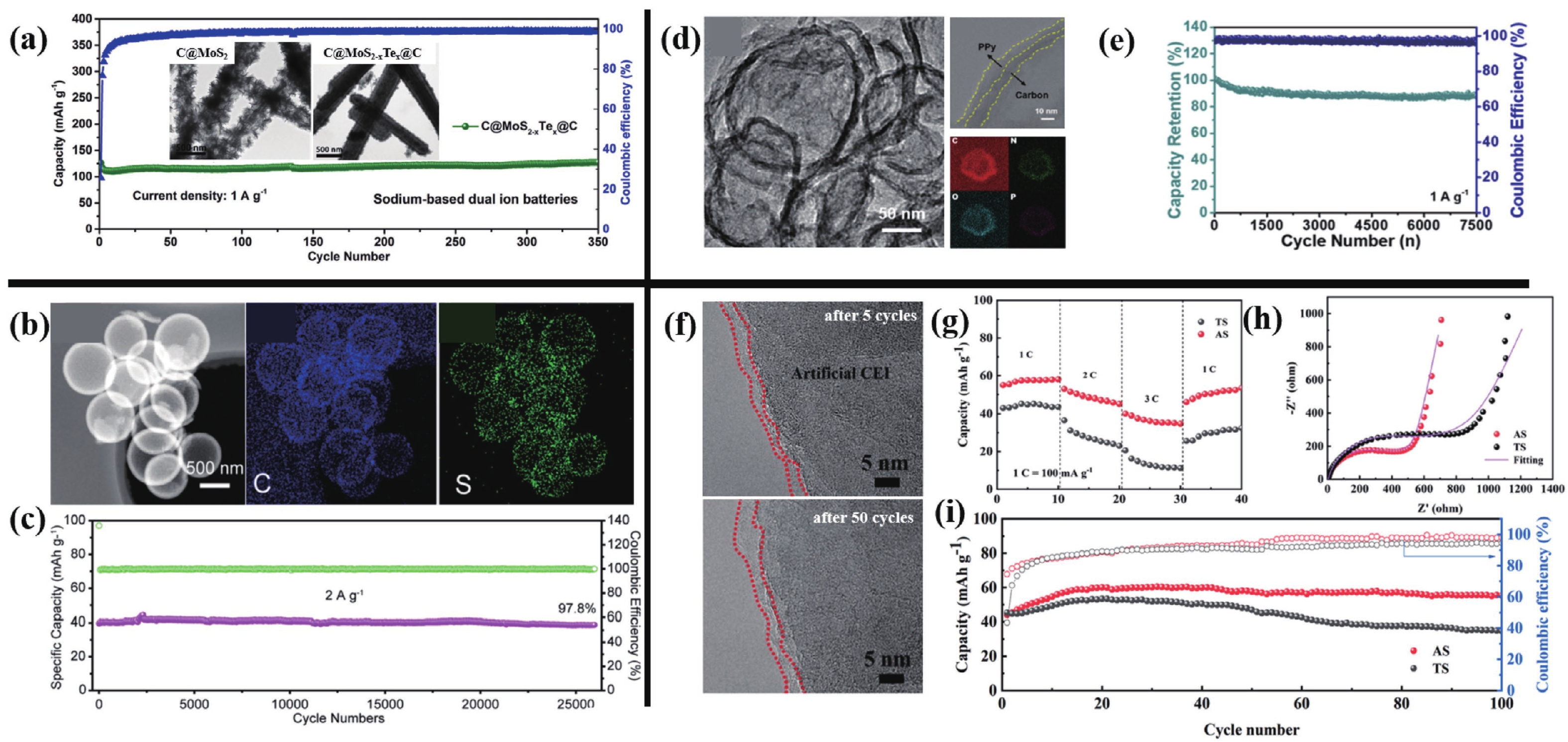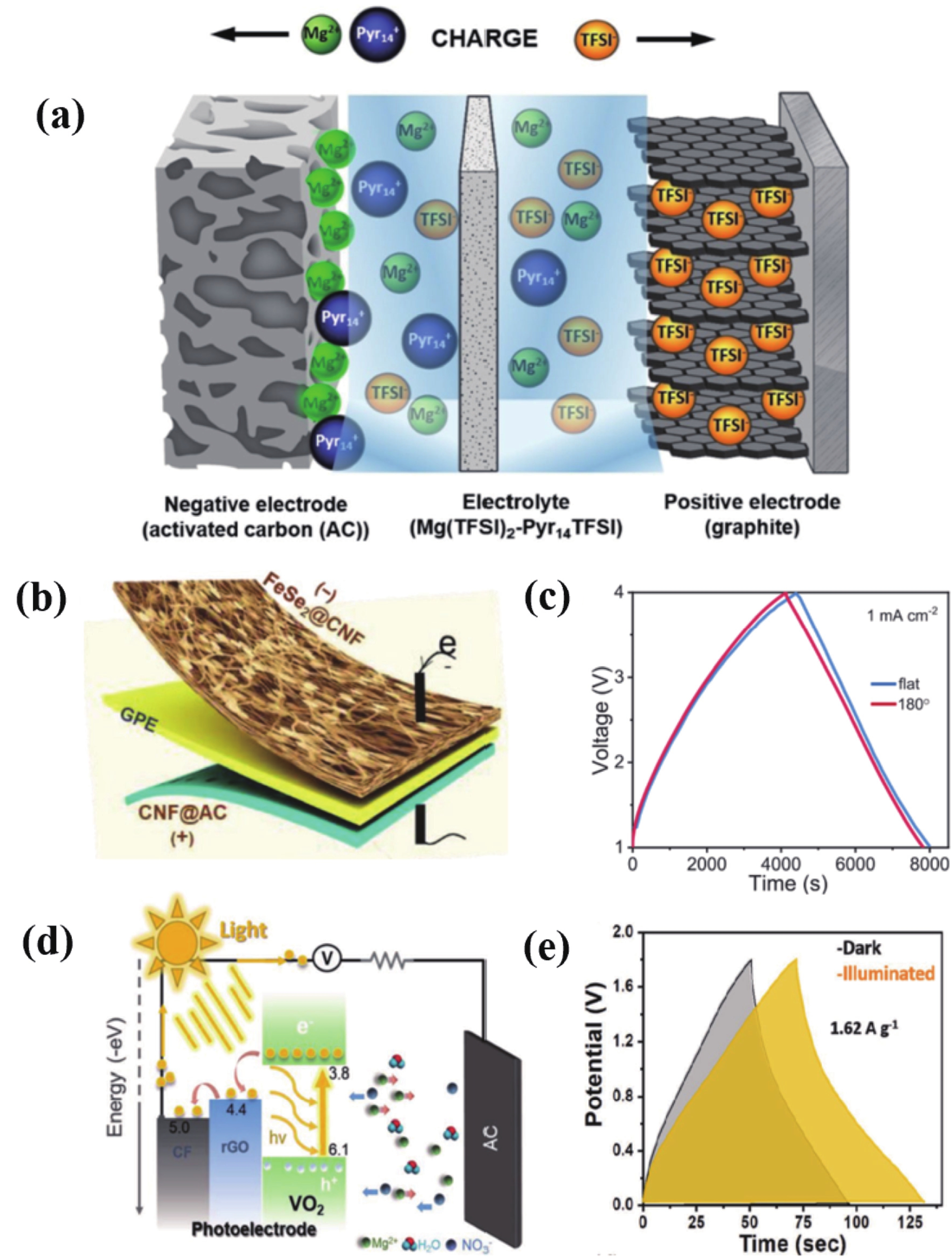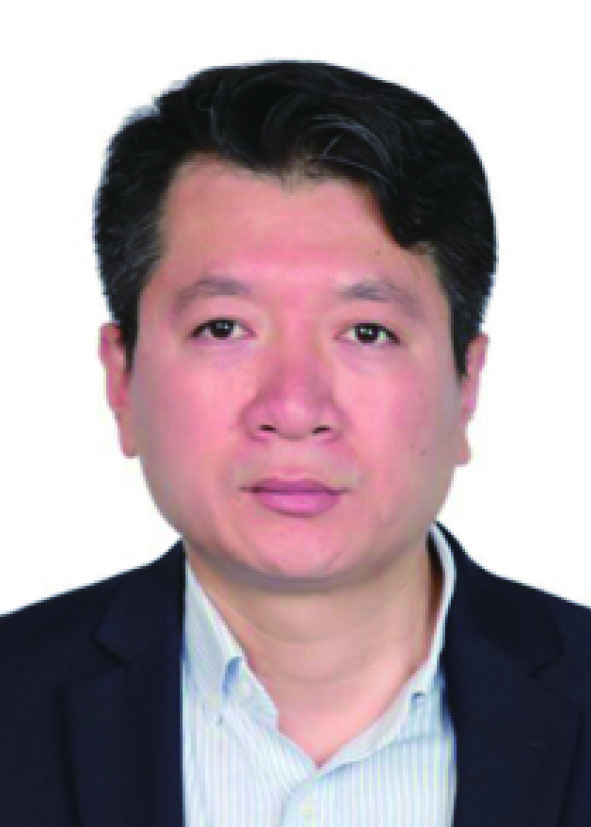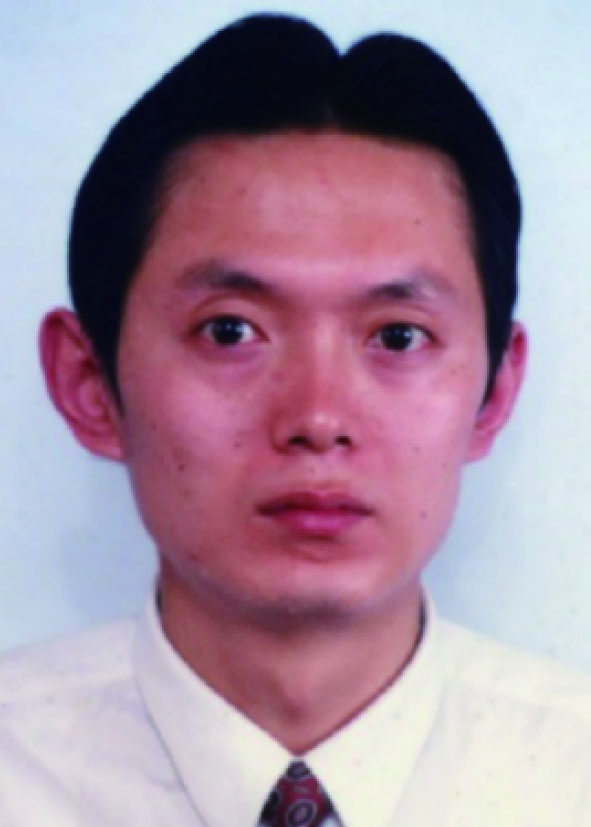| Citation: |
Shijiang He, Zidong Wang, Zhijie Wang, Yong Lei. Recent progress and future prospect of novel multi-ion storage devices[J]. Journal of Semiconductors, 2023, 44(4): 040201. doi: 10.1088/1674-4926/44/4/040201
****
S J He, Z D Wang, Z J Wang, Y Lei. Recent progress and future prospect of novel multi-ion storage devices[J]. J. Semicond, 2023, 44(4): 040201. doi: 10.1088/1674-4926/44/4/040201
|
Recent progress and future prospect of novel multi-ion storage devices
DOI: 10.1088/1674-4926/44/4/040201
More Information
-
References
[1] Deng L, Wei T, Liu J, et al. Recent developments of carbon-based anode materials for flexible lithium-ion batteries. Crystals, 2022, 12, 1279 doi: 10.3390/cryst12091279[2] Zhao C, Wang Z. An efficient entangled-photon source from semiconductor quantum dots. J Semicond, 2020, 41, 010401 doi: 10.1088/1674-4926/41/1/010401[3] Zhang D, Tan, C, Ou T, et al. Constructing advanced electrode materials for low-temperature lithium-ion batteries: A review. Energy Rep, 2022, 8, 4525 doi: 10.1016/j.egyr.2022.03.130[4] Zhao C, Xu B, Wang Z, et al. Boron-doped III-V semiconductors for Si-based optoelectronic devices. J Semicond, 2020, 41, 011301 doi: 10.1088/1674-4926/41/1/011301[5] Gao Y L, Pan Z H, Sun J G, et al. High-energy batteries: Beyond lithium-ion and their long road to commercialisation. Nano-Micro Lett, 2022, 14, 94 doi: 10.1007/s40820-022-00844-2[6] Zhu H F, Sha M, Zhao H P, et al. Highly-rough surface carbon nanofibers film as an effective interlayer for lithium-sulfur batteries. J Semicond, 2020, 41, 092701 doi: 10.1088/1674-4926/41/9/092701[7] Xu S F, Sun M X, Wang Q, et al. Recent progress in organic electrodes for zinc-ion batteries. J Semicond, 2020, 41, 091704 doi: 10.1088/1674-4926/41/9/091704[8] Amatucci G G, Badway, Du Pasquier, et al. An asymmetric hybrid nonaqueous energy storage cell. J Electrochem Soc, 2001, 148, 930 doi: 10.1149/1.1383553[9] Zheng J S, Xing G G, Zhang L Y, et al. A minireview on high-performance anodes for lithium-ion capacitors. Batter Supercaps, 2021, 4, 897 doi: 10.1002/batt.202000292[10] Liu J, Wang Z J, Lei Y. A close step towards industrialized application of solar water splitting. J Semicond, 2020, 41, 090401 doi: 10.1088/1674-4926/41/9/090401[11] Zhou Y J, Wang Z D, Zheng C F. Construction of Co0.85Se@Ni nanopores array hybrid electrode for high-performance asymmetric supercapacitors. Chem Eng Sci, 2022, 247, 117081 doi: 10.1016/j.ces.2021.117081[12] Yang B J, Liu B, Chen J T, et al. Realizing high-performance lithium-ion hybrid capacitor with a 3D MXene-carbon nanotube composite anode. Chem Eng J, 2022, 429, 132392 doi: 10.1016/j.cej.2021.132392[13] Zong J G, Wang F, Liu H, et al. Te-doping induced C@MoS2–xTex@C nanocomposites with improved electronic structure as high-performance anode for sodium-based dual-ion batteries. J Power Sources, 2022, 535, 231462 doi: 10.1016/j.jpowsour.2022.231462[14] Qiu C, Li M, Qiu D, et al. Ultra-high sulfur-doped hierarchical porous hollow carbon sphere anodes enabling unprecedented durable potassium-ion hybrid capacitors. ACS Appl Mater Interfaces 2021, 13, 4994, 2 doi: 10.1021/acsami.1c14314[15] Zhang M D, Zheng X, Mu J W, et al. Robust and fast lithium storage enabled by Polypyrrole-coated nitrogen and phosphorus Co-doped hollow carbon nanospheres for lithium-ion capacitors. Front Chem, 2021, 9, 760473 doi: 10.3389/fchem.2021.760473[16] Wang Q, Liu W X, Wang S S, et al. High cycling stability graphite cathode modified by artificial CEI for potassium-based dual-ion batteries. J Alloys Compnds, 2022, 918, 165436 doi: 10.1016/j.jallcom.2022.165436[17] Wang L, Zhang X, Li C, et al. Recent advances in transition metal chalcogenides for lithium-ion capacitors. Rare Metals, 2022, 41, 2971 doi: 10.1007/s12598-022-02028-8[18] Sun J, Li G, Wang Z, et al. Balancing the anions adsorption and intercalation in carbon cathode enables high energy density dual-carbon lithium-ion capacitors. Carbon, 2022, 200, 28 doi: 10.1016/j.carbon.2022.08.046[19] Kotronia A, Edstrom K, Brandell D, et al. Ternary ionogel electrolytes enable quasi-solid-state potassium dual-ion intercalation batteries. Adv Energy Sustain Res, 2022, 3, 2100122 doi: 10.1002/aesr.202100122[20] Chen Z, Li Z, He W, et al. Lithium-sodium ion capacitors: A new type of hybrid supercapacitors with high energy density. J Electroanalyt Chem, 2021, 888, 115202 doi: 10.1016/j.jelechem.2021.115202[21] Meister P, Kupers V, Kolek M, et al. Enabling Mg-based ionic liquid electrolytes for hybrid dual-ion capacitors. Batter Supercaps, 2021, 4, 504 doi: 10.1002/batt.202000246[22] Liang T, Mao Z, Li L, et al. A mechanically flexible necklace-like architecture for achieving fast charging and high capacity in advanced lithium-ion capacitors. Small, 2022, 18, 2201792 doi: 10.1002/smll.202201792[23] Park S K, Boruah B D, Pujari A, et al. Photo-enhanced magnesium-ion capacitors using photoactive electrodes. Small, 2022, 18, 2202785 doi: 10.1002/smll.202202785[24] Ma M, Wang Z, Lei Y. An in-depth understanding of photophysics in organic photocatalysts. J Semicond, 2023, 44, 030401 doi: 10.1088/1674-4926/44/3/030401[25] Zeng L, Ma R J, Zhou Z X, et al. Ester side chains engineered quinoxaline-based D-A copolymers for high-efficiency all-polymer solar cells. Chem Eng J, 2021, 429, 132551 doi: 10.1016/j.cej.2021.132551[26] Li C, Li J, Huang Y, et al. Recent development in electronic structure tuning of graphitic carbon nitride for highly efficient photocatalysis. J Semicond, 2022, 43, 021701 doi: 10.1088/1674-4926/43/2/021701 -
Proportional views

§These authors contributed equally to this work and should be considered as co-first authors.





 DownLoad:
DownLoad:











 Shijiang He:got his B.S. degree from Changzhou University in 2021. Now he is a M.S. student at the Shanghai University. His research interests focus on the construction and functionalization of nanomaterials for energy storage devices
Shijiang He:got his B.S. degree from Changzhou University in 2021. Now he is a M.S. student at the Shanghai University. His research interests focus on the construction and functionalization of nanomaterials for energy storage devices Zidong Wang:received his M.S. degree in materials physics and chemistry from Yunnan University in 2020. He is currently a Ph.D. student under the supervision of Prof. Yong Lei at the Technical University of Ilmenau in Germany. His research interests focus on designing and synthesizing nanostructural inorganic materials for electrochemical energy storage
Zidong Wang:received his M.S. degree in materials physics and chemistry from Yunnan University in 2020. He is currently a Ph.D. student under the supervision of Prof. Yong Lei at the Technical University of Ilmenau in Germany. His research interests focus on designing and synthesizing nanostructural inorganic materials for electrochemical energy storage Zhijie Wang:received his B.S. degree in 2004 from Zhejiang University and Ph.D. degree in 2009 from the Institute of Semiconductors, Chinese Academy of Sciences. After four years of postdoc research in the University of Wyoming and the University of Michigan, he worked as a senior scientist and a junior group leader at the Ilmenau University of Technology (Germany) in the 3D Nanostructuring Group of Prof. Yong Lei since 2013. He is currently a professor in the Institute of Semiconductors, Chinese Academy of Sciences. His research interest includes nanomaterials, nano-devices, energy-related sciences, surface science and photoelectron chemistry
Zhijie Wang:received his B.S. degree in 2004 from Zhejiang University and Ph.D. degree in 2009 from the Institute of Semiconductors, Chinese Academy of Sciences. After four years of postdoc research in the University of Wyoming and the University of Michigan, he worked as a senior scientist and a junior group leader at the Ilmenau University of Technology (Germany) in the 3D Nanostructuring Group of Prof. Yong Lei since 2013. He is currently a professor in the Institute of Semiconductors, Chinese Academy of Sciences. His research interest includes nanomaterials, nano-devices, energy-related sciences, surface science and photoelectron chemistry Yong Lei:is Professor and Head of Group (Chair) of Applied Nano-physics at Technical University of Ilmenau in Germany. He started to work in Germany as an Alexander von Humboldt Fellow at Karlsruhe Institute of Technology in 2003. From 2006 he worked at University of Muenster as a group leader and Junior Professor. In 2011, he joined the Technical University of Ilmenau as a Professor. His research focuses on template-based nanostructuring, energy conversion and storage devices, and optoelectronic applications of functional nanostructures. He received a few prestigious funding in Europe and Germany including two European Research Council Grants
Yong Lei:is Professor and Head of Group (Chair) of Applied Nano-physics at Technical University of Ilmenau in Germany. He started to work in Germany as an Alexander von Humboldt Fellow at Karlsruhe Institute of Technology in 2003. From 2006 he worked at University of Muenster as a group leader and Junior Professor. In 2011, he joined the Technical University of Ilmenau as a Professor. His research focuses on template-based nanostructuring, energy conversion and storage devices, and optoelectronic applications of functional nanostructures. He received a few prestigious funding in Europe and Germany including two European Research Council Grants



